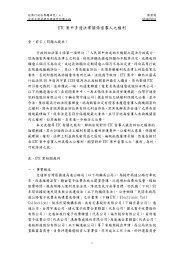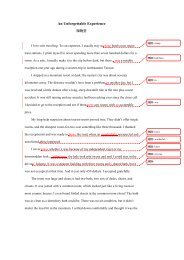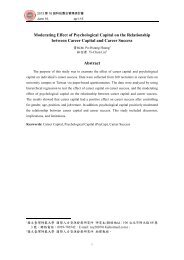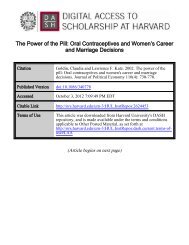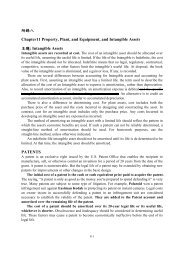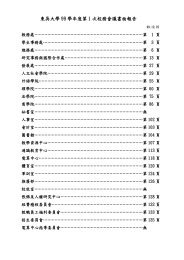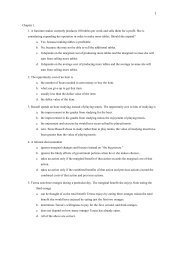Dear all, Please read the attachment carefully and hand in all prof ...
Dear all, Please read the attachment carefully and hand in all prof ...
Dear all, Please read the attachment carefully and hand in all prof ...
You also want an ePaper? Increase the reach of your titles
YUMPU automatically turns print PDFs into web optimized ePapers that Google loves.
<strong>Dear</strong> <strong>all</strong>,<br />
<strong>Please</strong> <strong>read</strong> <strong>the</strong> <strong>attachment</strong> <strong>carefully</strong> <strong>and</strong> h<strong>and</strong> <strong>in</strong> <strong>all</strong> <strong>prof</strong>. need ON TIME!!<br />
*students will need to submit chapter summary (for 8 chapters) start<strong>in</strong>g<br />
on 10/17, 10/24, 10/31, 11/07, 11/14, 11/21, 11/28 <strong>and</strong> 12/05.<br />
*The class would start around Dec. 14 (Wednesday) <strong>and</strong> last about 7 - 8<br />
days. The last day of <strong>the</strong> class is usu<strong>all</strong>y on Dec. 23rd.<br />
* we start <strong>the</strong> class on/around Dec. 14<br />
* The students will make project presentation on <strong>the</strong> very last day of class<br />
(around Dec. 23 or 22); <strong>the</strong>ir f<strong>in</strong>al written project won't be due until around<br />
Jan. 10.<br />
Alice Yen-Tzu Cheng<br />
Secretary, Global Bus<strong>in</strong>ess Program<br />
School of Bus<strong>in</strong>ess. Soochow University<br />
Tel:+886-2-23111531 ext. 2881<br />
Fax:+886-2-23893855<br />
E-mail:alicecheng@scu.edu.tw<br />
Add:56, Kuei-Yang St. Sec. 1, Taipei, Taiwan 100, R.O.C<br />
1
Soochow University<br />
College of Management<br />
Global Bus<strong>in</strong>ess Program<br />
(2011-2012 Academic Year)<br />
Management of Market<strong>in</strong>g<br />
Dr. Monle Lee<br />
Textbook: CONTEMPORARY MARKETING, by Boone & Kurtz, 14th edition<br />
(Thomson/South-Western 2010; or (this is <strong>the</strong> softcover copy) Contemporary<br />
Market<strong>in</strong>g, by Boone & Kurtz, 2011 update, South-Western/Cengage Learn<strong>in</strong>g,<br />
ISBN-13: 978-0-538-74690-8/ISBN-10: 0-538-74690-4)<br />
Supplements: Case Discussions (to be distributed later); Extra class discussion<br />
materials will be given at <strong>the</strong> proper times.<br />
Session 1<br />
Introduction<br />
Chapter 1: Market<strong>in</strong>g: <strong>the</strong> Art <strong>and</strong> Science of Satisfy<strong>in</strong>g Customers<br />
Ma<strong>in</strong> Learn<strong>in</strong>g Objective(s): expla<strong>in</strong> how market<strong>in</strong>g creates utility through<br />
<strong>the</strong> exchange process; contrast market<strong>in</strong>g activities dur<strong>in</strong>g <strong>the</strong> four eras <strong>in</strong><br />
this history of market<strong>in</strong>g; outl<strong>in</strong>e <strong>the</strong> changes <strong>in</strong> <strong>the</strong> market<strong>in</strong>g<br />
environment due to technology<br />
Session 2<br />
Chapter 2: Strategic Plann<strong>in</strong>g <strong>in</strong> Contemporary Market<strong>in</strong>g<br />
Ma<strong>in</strong> Learn<strong>in</strong>g Objective(s): expla<strong>in</strong> how market<strong>in</strong>g plans differ at various<br />
levels <strong>in</strong> an organization; identify <strong>the</strong> steps <strong>in</strong> <strong>the</strong> market<strong>in</strong>g plann<strong>in</strong>g<br />
process; describe <strong>the</strong> concept of SWOT analysis <strong>and</strong> its major elements<br />
Chapter 3: <strong>the</strong> Market<strong>in</strong>g Environment, Ethics, <strong>and</strong> Social<br />
Responsibility<br />
Ma<strong>in</strong> Learn<strong>in</strong>g Objective(s): identify <strong>the</strong> five components of <strong>the</strong><br />
market<strong>in</strong>g environment; describe how government <strong>and</strong> o<strong>the</strong>r groups<br />
regulate market<strong>in</strong>g activities <strong>and</strong> how marketers can <strong>in</strong>fluence <strong>the</strong><br />
political-legal environment; discuss <strong>the</strong> impact of <strong>the</strong> technological<br />
environment on a firm’s market<strong>in</strong>g activities; expla<strong>in</strong> how <strong>the</strong> socialcultural<br />
environment <strong>in</strong>fluences market<strong>in</strong>g<br />
Session 3<br />
Chapter 4: E-Bus<strong>in</strong>ess: Manag<strong>in</strong>g <strong>the</strong> Customer Experience<br />
Ma<strong>in</strong> Learn<strong>in</strong>g Objective(s): def<strong>in</strong>e e-bus<strong>in</strong>ess <strong>and</strong> give examples of each<br />
function of <strong>the</strong> Internet; describe how marketers use <strong>the</strong> Internet to<br />
achieve <strong>the</strong>ir firm’s objectives; expla<strong>in</strong> how marketers use <strong>in</strong>teractive<br />
tools as part of <strong>the</strong>ir onl<strong>in</strong>e market<strong>in</strong>g strategies<br />
2
Video Case Discussions: 3.2 The Market<strong>in</strong>g Environment, Ethics, <strong>and</strong><br />
Social Responsibility at Scholfield Honda (VC 4)<br />
Session 4<br />
Chapter 5: Consumer Behavior<br />
Ma<strong>in</strong> Learn<strong>in</strong>g Objective(s): expla<strong>in</strong> how marketers classify behavioral<br />
<strong>in</strong>fluences on consumer decisions; describe cultural, group, <strong>and</strong> family<br />
<strong>in</strong>fluences on consumer behavior; outl<strong>in</strong>e <strong>the</strong> steps <strong>in</strong> <strong>the</strong> consumer<br />
decision process<br />
Video Case Discussions 6.2 Bus<strong>in</strong>ess-to-Bus<strong>in</strong>ess Market<strong>in</strong>g at Flight<br />
001 (VC-6) (refer to Chapter 6 for answers)<br />
Session 5<br />
Chapter 6: Bus<strong>in</strong>ess-to-Bus<strong>in</strong>ess (B2B) Market<strong>in</strong>g<br />
Ma<strong>in</strong> Learn<strong>in</strong>g Objective(s): describe <strong>the</strong> major approaches to segment<strong>in</strong>g<br />
bus<strong>in</strong>ess-to-bus<strong>in</strong>ess markets; identify <strong>the</strong> major characteristics of <strong>the</strong><br />
bus<strong>in</strong>ess market <strong>and</strong> its dem<strong>and</strong>; outl<strong>in</strong>e <strong>the</strong> steps <strong>in</strong> <strong>the</strong> organizational<br />
buy<strong>in</strong>g process<br />
Chapter 8: Market<strong>in</strong>g Research <strong>and</strong> Sales Forecast<strong>in</strong>g<br />
Ma<strong>in</strong> Learn<strong>in</strong>g Objective(s): list <strong>and</strong> expla<strong>in</strong> <strong>the</strong> steps <strong>in</strong> <strong>the</strong> market<strong>in</strong>g<br />
research process; identify <strong>the</strong> methods by which market<strong>in</strong>g researchers<br />
collect primary data; discuss <strong>the</strong> ch<strong>all</strong>enges of conduct<strong>in</strong>g market<strong>in</strong>g<br />
research <strong>in</strong> global markets; outl<strong>in</strong>e important users of computer<br />
technology <strong>in</strong> market<strong>in</strong>g research<br />
Session 6<br />
Chapter 9: Market Segmentation, Target<strong>in</strong>g, <strong>and</strong> Position<strong>in</strong>g<br />
Ma<strong>in</strong> Learn<strong>in</strong>g Objective(s): outl<strong>in</strong>e <strong>the</strong> role of market segmentation <strong>in</strong><br />
develop<strong>in</strong>g a market<strong>in</strong>g strategy; expla<strong>in</strong> each of <strong>the</strong> four bases for<br />
segment<strong>in</strong>g consumer markets; expla<strong>in</strong> <strong>the</strong> reasons for position<strong>in</strong>g <strong>and</strong><br />
reposition<strong>in</strong>g products<br />
Video Case Discussions: 9.2 Target<strong>in</strong>g <strong>and</strong> Position<strong>in</strong>g at Numi Tea<br />
(VC 9)<br />
Session 7<br />
Chapter 11: Product <strong>and</strong> Service Strategies<br />
Ma<strong>in</strong> Learn<strong>in</strong>g Objectives: list <strong>the</strong> classifications of consumer goods <strong>and</strong><br />
services, <strong>and</strong> briefly describe each category; describe each of <strong>the</strong> types of<br />
bus<strong>in</strong>ess goods <strong>and</strong> services; identify <strong>the</strong> major product mix decisions that<br />
marketers must make<br />
Chapter 12: Develop<strong>in</strong>g <strong>and</strong> Manag<strong>in</strong>g Br<strong>and</strong> <strong>and</strong> Product Categories<br />
3
Ma<strong>in</strong> Learn<strong>in</strong>g Objective(s): expla<strong>in</strong> <strong>the</strong> benefits of category <strong>and</strong> br<strong>and</strong><br />
management; identify <strong>the</strong> different types of br<strong>and</strong>s; expla<strong>in</strong> <strong>the</strong> strategic<br />
value of br<strong>and</strong> equity; describe <strong>the</strong> strategies for new product development<br />
Session 8<br />
Chapter 13: Market<strong>in</strong>g Channels <strong>and</strong> Supply Cha<strong>in</strong> Management<br />
Ma<strong>in</strong> Learn<strong>in</strong>g Objective(s): describe <strong>the</strong> various types of distribution<br />
channels available to marketers; describe <strong>the</strong> concepts of channel<br />
management, conflict, <strong>and</strong> cooperation with<strong>in</strong> <strong>the</strong> market<strong>in</strong>g channel<br />
Video Case Discussions: 13.2 Market<strong>in</strong>g Channels <strong>and</strong> Supply Cha<strong>in</strong><br />
Management at Recycl<strong>in</strong>e (VC-12)<br />
Session 9<br />
Session 10<br />
Chapter 14: Retailers, Wholesalers, <strong>and</strong> Direct Marketers<br />
Ma<strong>in</strong> Learn<strong>in</strong>g Objective(s): expla<strong>in</strong> <strong>the</strong> wheel of retail<strong>in</strong>g; expla<strong>in</strong> how<br />
retailers select target markets; identify <strong>the</strong> functions performed by<br />
wholesal<strong>in</strong>g <strong>in</strong>termediaries; compare <strong>the</strong> basic types of direct market<strong>in</strong>g<br />
<strong>and</strong> nonstore retail<strong>in</strong>g<br />
Chapter 15: Integrated Market<strong>in</strong>g Communications<br />
Ma<strong>in</strong> Learn<strong>in</strong>g Objective(s): discuss how <strong>in</strong>tegrated market<strong>in</strong>g<br />
communications relates to <strong>the</strong> development of an optimal promotional mix;<br />
identify <strong>the</strong> different elements of <strong>the</strong> promotional mix <strong>and</strong> expla<strong>in</strong> how<br />
marketers develop an optimal promotional mix; discuss <strong>the</strong> value of<br />
market<strong>in</strong>g communications<br />
Chapter 16: Advertis<strong>in</strong>g <strong>and</strong> Public Relations<br />
Ma<strong>in</strong> Learn<strong>in</strong>g Objective(s): identify <strong>the</strong> three major advertis<strong>in</strong>g<br />
objectives <strong>and</strong> <strong>the</strong> two basic categories of advertis<strong>in</strong>g; describe <strong>the</strong> process<br />
of creat<strong>in</strong>g an ad; list <strong>and</strong> compare <strong>the</strong> major advertis<strong>in</strong>g media; identify<br />
<strong>the</strong> pr<strong>in</strong>cipal methods of sales promotion; expla<strong>in</strong> <strong>the</strong> roles of cross<br />
promotions, public relations, publicity, <strong>and</strong> ethics <strong>in</strong> an organization’s<br />
promotional strategy<br />
Session 11 Chapter 17: Sales Promotion (pp. 587-594)<br />
Ma<strong>in</strong> Learn<strong>in</strong>g Objective(s): Identify <strong>the</strong> pr<strong>in</strong>cipal methods of sales<br />
promotion; expla<strong>in</strong> <strong>the</strong> roles of cross promotions<br />
Video Case Discussions: 16.2 Advertis<strong>in</strong>g <strong>and</strong> Public Relations at<br />
Ogden Publications (VC 15)<br />
Chapter 18: Price Concepts<br />
Ma<strong>in</strong> Learn<strong>in</strong>g Objective(s): outl<strong>in</strong>e <strong>the</strong> legal constra<strong>in</strong>ts on pric<strong>in</strong>g;<br />
expla<strong>in</strong> <strong>the</strong> major cost-plus approaches to price sett<strong>in</strong>g; identify <strong>the</strong> major<br />
pric<strong>in</strong>g ch<strong>all</strong>enges fac<strong>in</strong>g onl<strong>in</strong>e <strong>and</strong> <strong>in</strong>ternational marketers<br />
4
Session 12<br />
Chapter 19: Pric<strong>in</strong>g Strategies<br />
Ma<strong>in</strong> Learn<strong>in</strong>g Objective(s): compare <strong>the</strong> alternative pric<strong>in</strong>g strategies <strong>and</strong><br />
expla<strong>in</strong> when each strategy is most appropriate; identify <strong>the</strong> various<br />
pric<strong>in</strong>g policy decisions that marketers must make<br />
Video Case Discussions: 18.2 Pric<strong>in</strong>g Concepts at Evogear.com (VC<br />
16-17)<br />
Session 13<br />
Project Presentations<br />
* Additional Read<strong>in</strong>g materials <strong>and</strong>/or written cases will be given at <strong>the</strong> proper times;<br />
** The <strong>in</strong>structor reserves <strong>the</strong> right to make any changes<br />
Objectives of This Course<br />
1. To illustrate <strong>the</strong> dynamic, excit<strong>in</strong>g, chang<strong>in</strong>g nature of market<strong>in</strong>g;<br />
2. Identify <strong>the</strong> many variables <strong>in</strong>volved <strong>in</strong> market<strong>in</strong>g decision mak<strong>in</strong>g;<br />
3. To enlarge <strong>the</strong> discussion of several market<strong>in</strong>g topics of <strong>in</strong>creased importance,<br />
particularly <strong>the</strong> strategic-plann<strong>in</strong>g process, sales promotion <strong>and</strong> publicity decision,<br />
new forces <strong>in</strong> <strong>the</strong> environment, buyer behavior <strong>the</strong>ory, organizational-buy<strong>in</strong>g<br />
behavior, market<strong>in</strong>g of services, <strong>and</strong> distribution-channel developments<br />
Assigned Read<strong>in</strong>gs:<br />
It is essential that <strong>all</strong> text assignments be <strong>read</strong>. Students should also prepare <strong>the</strong> endof-chapter<br />
cases for class discussions whenever assigned by <strong>the</strong> <strong>in</strong>structor.<br />
Attendance:<br />
Attendance will be taken periodic<strong>all</strong>y <strong>in</strong> class. Norm<strong>all</strong>y, less than one absence will<br />
not affect your grade.<br />
Class Participation:<br />
The students should <strong>read</strong> <strong>all</strong> assignments (chapters, cases, h<strong>and</strong>outs) before com<strong>in</strong>g to<br />
<strong>the</strong> class. He/She would be expected to express his/her op<strong>in</strong>ion dur<strong>in</strong>g <strong>the</strong>se discussions.<br />
Student <strong>in</strong>volvement is important <strong>in</strong> this class <strong>and</strong> will be graded accord<strong>in</strong>gly.<br />
Exam/Grad<strong>in</strong>g:<br />
Class Participation & Attendance 20% + 10%<br />
Chapters Outl<strong>in</strong>es<br />
15% (please see <strong>the</strong> last page)<br />
Project Presentation 20%<br />
Written Project 25%<br />
(due by Jan. 09, 2012 Taiwan local time, via e-mail <strong>attachment</strong> to mlee@iusb.edu)<br />
* Your <strong>in</strong>structor reserves <strong>the</strong> right to make any changes on <strong>the</strong> above grade composition<br />
5
Market<strong>in</strong>g Plan Presentation: There will be 2 members <strong>in</strong> each group (if <strong>the</strong>re are<br />
more than 8 active students <strong>in</strong> <strong>the</strong> class, up to 3 students will be <strong>all</strong>owed <strong>in</strong> each team);<br />
choose your own teammate; each team has 30 m<strong>in</strong>utes to make <strong>the</strong>ir presentation.<br />
Written Market<strong>in</strong>g Plan: You will have <strong>the</strong> same teammate, both <strong>in</strong> <strong>the</strong> presentation<br />
stage <strong>and</strong> <strong>in</strong> <strong>the</strong> written stage; <strong>the</strong> written paper should be around 20 pages <strong>in</strong> <strong>the</strong> ma<strong>in</strong><br />
text <strong>and</strong> <strong>the</strong> rest go to appendix section, if any (typed, double spaced, word file).<br />
Use <strong>the</strong> follow<strong>in</strong>g format for both Project Presentation (Powerpo<strong>in</strong>t – 30 m<strong>in</strong>utes for<br />
each team) <strong>and</strong> Written Project (around 20 pages <strong>in</strong> <strong>the</strong> ma<strong>in</strong> text) –<br />
Market<strong>in</strong>g Plan – (Presentation – <strong>in</strong>clude item 1, 2, 3, <strong>and</strong> 4; written – <strong>all</strong> items below, plus<br />
executive summary)<br />
1. Introduction – <strong>in</strong>clud<strong>in</strong>g company <strong>and</strong> chosen country backgrounds & market<strong>in</strong>g<br />
objective(s);<br />
2. SWOT analysis: underst<strong>and</strong> <strong>the</strong> compact car market with<strong>in</strong> <strong>the</strong> chosen automobile<br />
<strong>in</strong>dustry <strong>and</strong> form an effective position<strong>in</strong>g strategy for Sonic; research competitors’<br />
offer<strong>in</strong>gs to better underst<strong>and</strong> <strong>the</strong> Chevrolet Sonic’s place <strong>in</strong> <strong>the</strong> market; review<br />
<strong>prof</strong>essional <strong>and</strong> consumer sources to assess sales projections;<br />
3. Target market: identify both <strong>the</strong> demographics <strong>and</strong> psychographics of this target<br />
market <strong>in</strong>clud<strong>in</strong>g characteristics, attitudes <strong>and</strong> beliefs; note <strong>the</strong> key attributes of <strong>the</strong><br />
Chevrolet Sonic that are most attractive to <strong>the</strong> target market <strong>in</strong> <strong>the</strong> chosen country;<br />
4. Promotion strategy/IMC strategy (with<strong>in</strong> <strong>the</strong> market<strong>in</strong>g mix): market<strong>in</strong>g mix, <strong>in</strong>clud<strong>in</strong>g,<br />
but not limited to ‐ identify <strong>the</strong> tone, position <strong>and</strong> message; develop a s<strong>in</strong>gle, <strong>in</strong>tegrated<br />
message to promote <strong>the</strong> Chevrolet Sonic ; market<strong>in</strong>g tactics <strong>and</strong> creative samples;<br />
propose <strong>and</strong> provide rationale for <strong>the</strong> selection of traditional <strong>and</strong> non‐traditional tactics<br />
<strong>in</strong>clud<strong>in</strong>g event ideas, promotional tactics <strong>and</strong> digital media/content for one year;<br />
creatively present primary market<strong>in</strong>g messages; develop visuals, content <strong>and</strong> <strong>all</strong><br />
tangibles for each campaign tactic;<br />
5. Budget: assign budge percentages to each aspect of your market<strong>in</strong>g plan (especi<strong>all</strong>y<br />
advertis<strong>in</strong>g campaign) assum<strong>in</strong>g a (US)$30,000 budget (make any sm<strong>all</strong> adjustments on<br />
<strong>the</strong> budget number, depend<strong>in</strong>g on <strong>the</strong> country chosen) to implement <strong>all</strong> tactics<br />
<strong>in</strong>clud<strong>in</strong>g media buys (if applicable); this figure does not <strong>in</strong>clude media production costs;<br />
justify <strong>all</strong>otted percentages for each tactic based on research, analysis, market <strong>prof</strong>ile<br />
<strong>and</strong> market<strong>in</strong>g strategy;<br />
6. Measurement <strong>and</strong> evaluation (monitor<strong>in</strong>g): determ<strong>in</strong>e a measurement rubric for each<br />
tactic; identify criterion by which effectiveness will be measured <strong>and</strong> evaluated.<br />
6
Chapters Outl<strong>in</strong>es 15%<br />
<strong>Please</strong> send your chapter outl<strong>in</strong>es to your <strong>in</strong>structor accord<strong>in</strong>g to <strong>the</strong> follow<strong>in</strong>g<br />
schedule – turn <strong>in</strong> by midnight Taiwan time<br />
1. Chapter 1: 10/17/2011<br />
2. Chapter 2: 10/24/2011<br />
3. Chapter 3: 10/31/2011<br />
4. Chapter 4: 11/07/2011<br />
5. Chapter 5: 11/14/2011<br />
6. Chapter 6: 11/21/2011<br />
7. Chapter 8: 11/28/2011<br />
8. Chapter 9: 12/05/2011<br />
Format: at least two full pages for each chapter; double spaced; 12 po<strong>in</strong>ts font; Times<br />
New Roman; sm<strong>all</strong> graphics/designs/tables are <strong>all</strong>owed; covers important concepts<br />
(please refer to <strong>the</strong> end of chapter important chapter concepts; refer <strong>the</strong> concepts to<br />
bus<strong>in</strong>ess practices); please send it to <strong>the</strong> <strong>in</strong>structor via mlee@iusb.edu; word format.<br />
7




